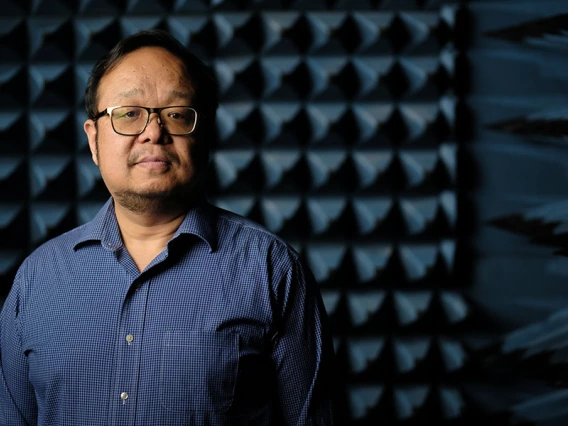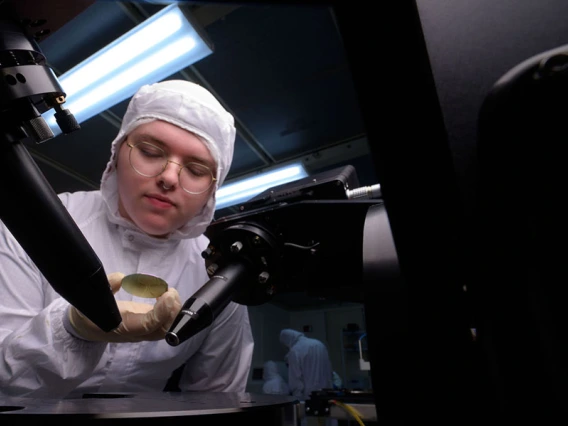WISPER center aims to advance security in an increasingly connected world
The University of Arizona partners with Virginia Tech, George Mason University and over 25 industry partners to pioneer 6G wireless communication research.

WISPER is the first NSF-funded center to focus on next generation (Next G) wireless communication systems.
Wireless 5G communication has been connecting the world since 2019. But while that technology produced faster data rates, improved coverage and processing time, the industry is now looking to the next generation for more security.
Marwan Krunz, Regents Professor, and Michael Wu, professor and head of the Department of Electrical and Computer Engineering, received $750,000 from the National Science Foundation to establish the Center for Wireless Innovation towards Secure, Pervasive, Efficient, and Resilient Next G Networks – also known as WISPER – with Virginia Tech and George Mason University.
Despite the center’s quiet title, Krunz and Wu expect WISPER to make a loud splash. Center researchers will substantially improve 6G functionality by testing creative solutions in security with artificial intelligence, and higher frequencies to support the needs of today’s technology.
“We need to make sure we have the infrastructure to support emerging applications and technologies like virtual reality. At the same time, it's got to be reliable and trusted,” said Wu, co-principal investigator on the project.
Funded by the NSF’s Industry University Research Cooperative Center program, WISPER brings together academics, industry and government. Virginia Tech will act as the lead site the first two years, then the lead will transfer to the University of Arizona.
“I'm particularly excited about the energy that I see from industry in supporting the center. We already recruited 27 companies,” said Marwan Krunz, the project’s principal investigator.
An increasingly connected world
Wireless communication is in its fifth generation of technological advancement. Most are familiar with 5G, which powers cell phone connection.
“The whole wireless telecommunications industry is looking into the subsequent generation of communication systems, which we term as 6G or sometimes Next G,” Krunz said. “There's a demand for a research center that integrates the needs of many companies in the telecommunications sector.”
Center investigators will delve into areas ranging from AI and cybersecurity to energy and defense.
From the smallest scale, like mobile phones and laptops, to the largest such as cloud servers and wireless networks, AI will play a major role in automation and high-speed data collection, said Wu.
“We cannot develop the next generation wireless network without any involvement of AI,” Wu said. “It's already happening in the fifth generation and it's going to be pervasive in the next generation.”
While Wu’s work is focused on this area, he’s also looking forward to seeing proposals submitted to the center for research projects that will investigate higher-frequency networks.
“Think about it like a pipe – if the pipe is wider, then you can allow more data to flow through more easily. When we move to the higher frequency, we have a bigger pipe and we will be able to support more data transmission in a faster way,” Wu said.
Where academics and industry meet
Two-thirds of the world’s population is connected online, according to the United Nations International Telecommunication Union. And with increased connectivity comes a greater risk for cyberattacks.
“As we go into Next G, this complexity will need more security,” Krunz said.
Cybercrime is surging. In 2023, there were more than 343 million victims of cybersecurity attacks. And 94% of organizations reported email security incidents in 2024. Sensitive data is under constant threat.
WISPER industry partners like Keysight Technologies are keen to see more research in this area.
The electronics and software company has collaborated with the College of Engineering for many years. Senior Vice President Mark Pierpoint was Industry Advisory Board chair of the Broadband Wireless Access and Applications Center (BWAC), another NSF center Krunz directs.
“There are more mobile phones in the world than people, and wireless communications is connecting more critical systems than ever before. We are interested in helping meet that need safely,” Pierpoint said. “There are bad actors out there and we want to make sure the networks we are using are safe.”
While WISPER offers industry members the opportunity to fund exploration, Pierpoint added that it’s also an excellent opportunity for companies to find new talent. The center will be a pipeline that connects doctoral students to research funding and potential careers after graduation.
“This is very important to a department like ECE,” Wu said. “The [center] engages a big number of companies. They support our PhDs and hire our students. It helps our identity and contributes to our department.”
The 27 industry partners who have already signed on to become center members will provide a yearly funding award of $50,000 each. The companies not only provide insight on research topics, but they also help support the center’s academic outreach.
“We intend this to be as inclusive as possible, and part of our outreach is to try to engage high schools and undergrads,” Krunz said. “There's an educational component to these centers to increase awareness of wireless systems, especially the Next G.”



